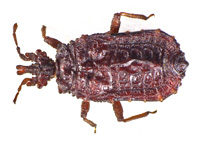Abstract
The colubrid snake Chrysopelea taprobanica Smith, 1943 was described from a holotype from Kanthali (= Kantalai) and paratypes from Kurunegala, both localities in Sri Lanka (formerly Ceylon) (Smith 1943). Since its description, literature pertaining to Sri Lankan snake fauna considered this taxon to be endemic to the island (Taylor 1950, Deraniyagala 1955, de Silva 1980, de Silva 1990, Somaweera 2004, Somaweera 2006, de Silva 2009, Pyron et al. 2013). In addition, earlier efforts on the Indian peninsula (e.g. Das 1994, 1997, Das 2003, Whitaker & Captain 2004, Aengals et al. 2012) and global data compilations (e.g. Wallach et al. 2014, Uetz & Hošek 2015) did not identify any record from mainland India until Guptha et al. (2015) recorded a specimen (voucher BLT 076 housed at Bio-Lab of Seshachalam Hills, Tirupathi, India) in the dry deciduous forest of Chamala, Seshachalam Biosphere Reserve in Andhra Pradesh, India in November 2013. Guptha et al. (2015) further mentioned an individual previously photographed in 2000 at Rishi Valley, Andhra Pradesh, but with no voucher specimen collected. Guptha’s record, assumed to be the first confirmed record of C. taprobanica in India, is noteworthy as it results in a large range extension, from northern Sri Lanka to eastern India with an Euclidean distance of over 400 km, as well as a change of status, i.e., species not endemic to Sri Lanka. However, at least three little-known previous records of this species from India evaded most literature and were overlooked by the researchers including ourselves.

